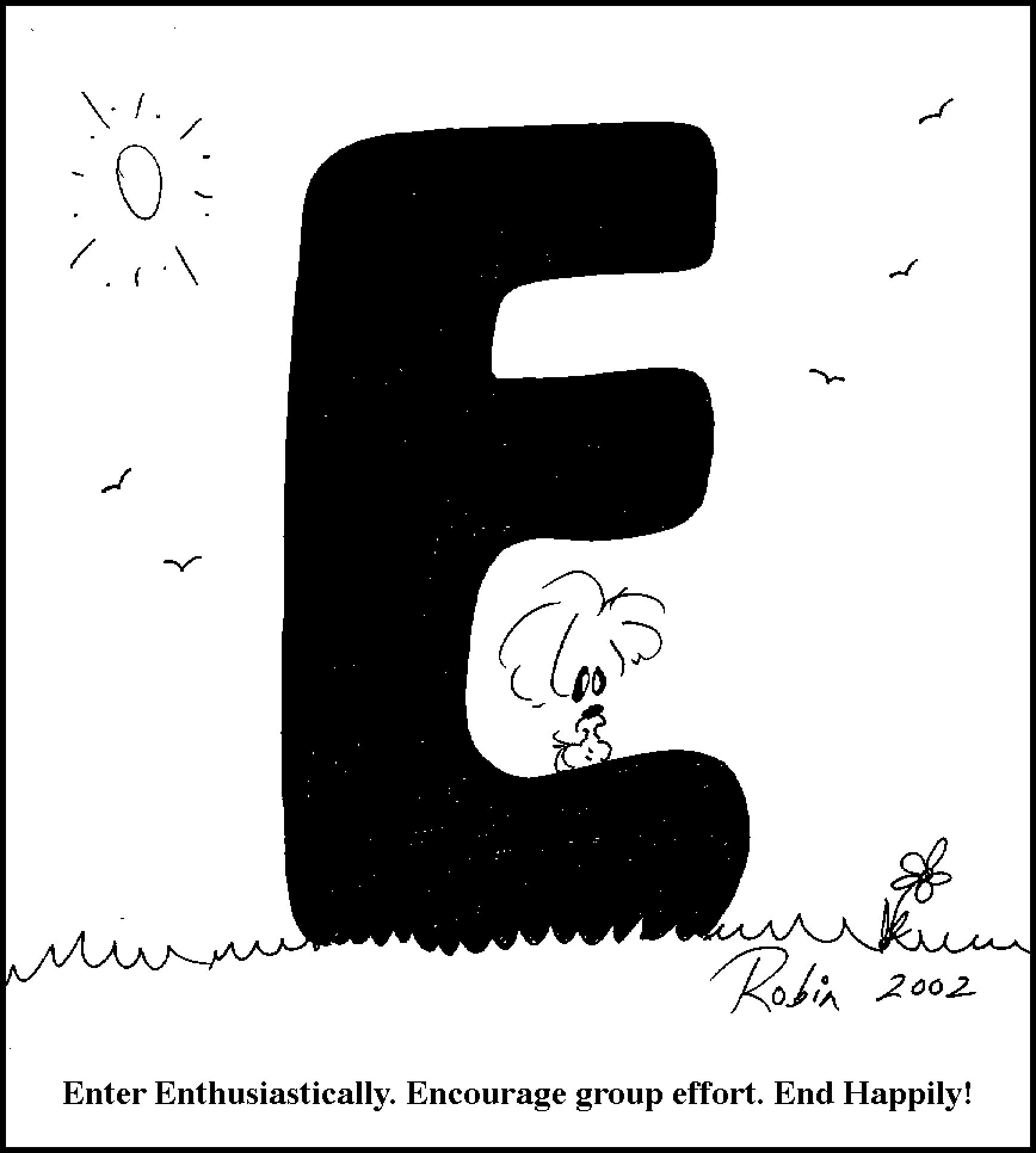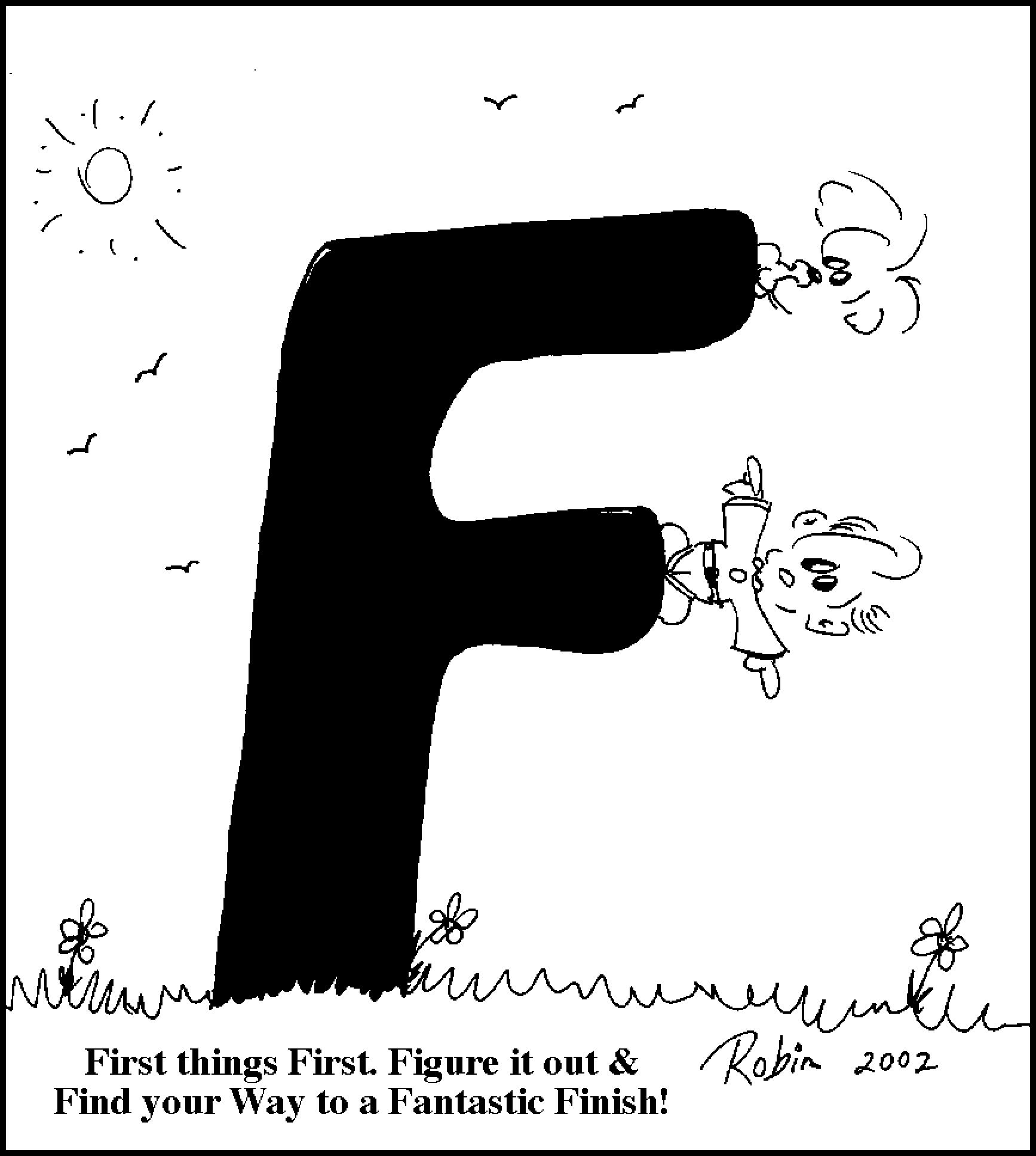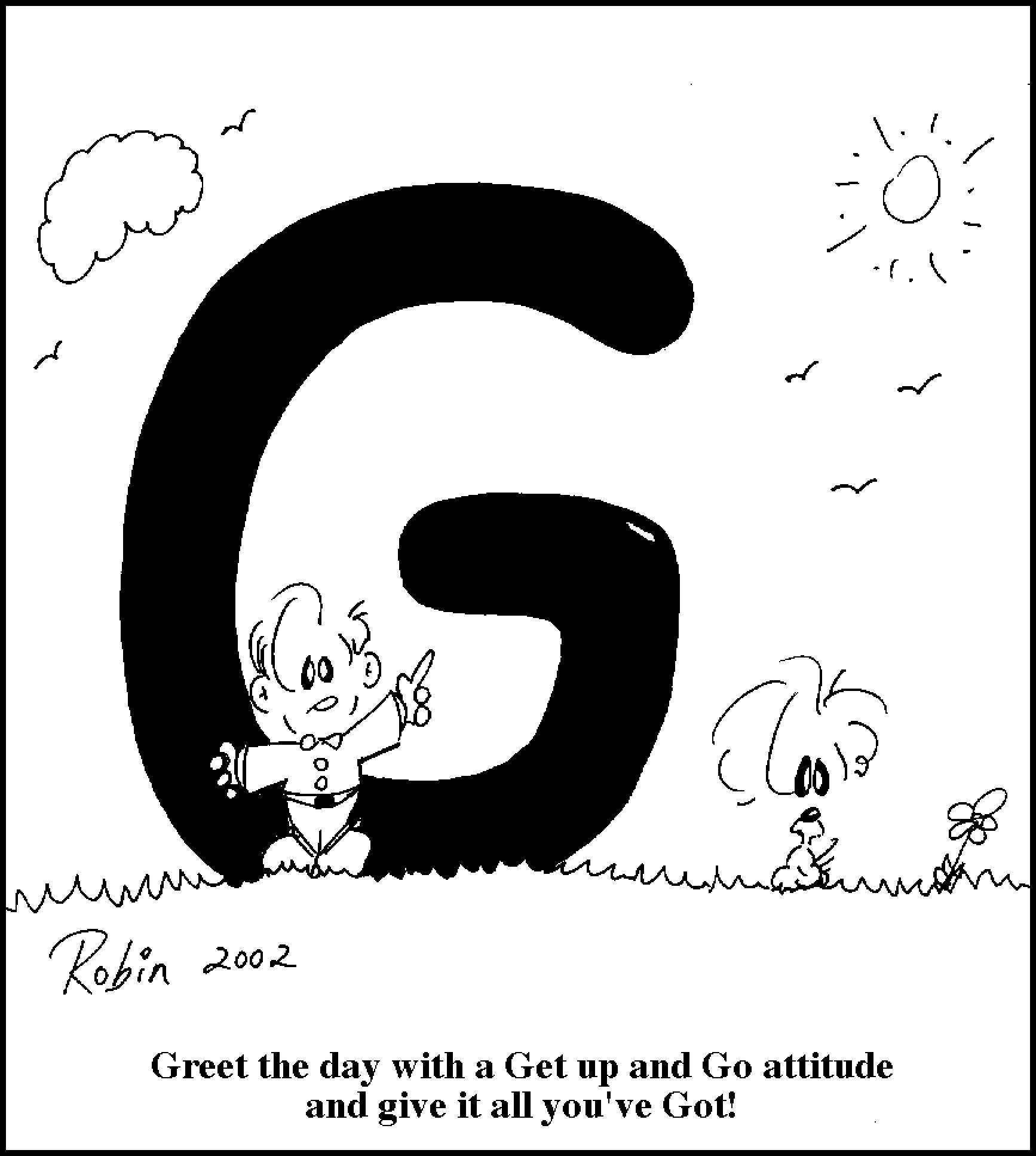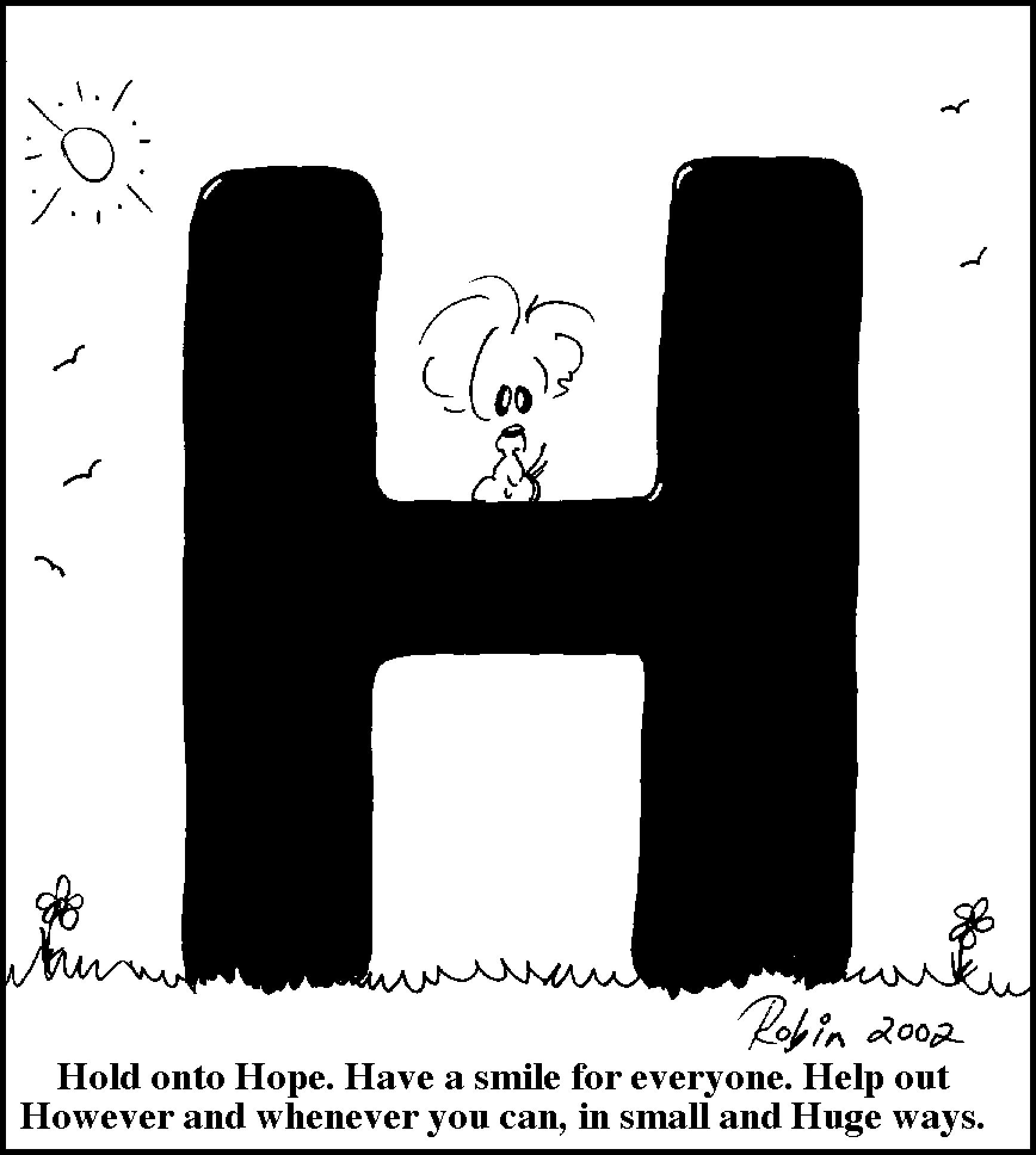An interview with Robin
Q: Did you come from an artistic family?
A: My dad always loved to doodle And my uncles were all talented
at sketching and especially oil painting. So I had early memories
of people drawing and painting in the family. And they always encouraged
me to be creative.
Q: Have you always enjoyed drawing?
A: Yes, as long as I can remember. I would sit and draw for hours
and hours. I started out using pencils and crayons and I still use
them to layout my artwork.
Q: What did you like to draw?
A: The very first cartoons I drew were characters from Winnie the
Pooh. I suppose the reason was that I liked the idea that the little
boy was named Christopher Robin. There was a connection to that
character since we shared the name ‘Robin’. I really liked drawing
eeyore the donkey and Winnie the Pooh. I also liked collecting and
drawing Hot Wheels cars. My uncle Keith used to take me to the drag
races in Union Grove, Wisconsin from when I was about six till I
was ten. So I got into drawing funny cars and hot rods.
Q: Where did your interests in art go from there?
A: When I was ten we moved to Payson, Arizona and I went to an all
Indian school for about a year. While living there I got to work
on throwing clay pots on a wheel, which was something that was really
great! It opened my mind to the possibilities that the art world
offers besides just drawing. Shortly after that I moved back to
Illinois and lived with my grandparents for about a year. My grandmother
really wanted to encourage my artistic talents, so she signed us
up for oil painting classes. That was a blast! I still enjoy working
with oil paints.
Q: So how did you get into cartooning?
A: My grandfather worked in downtown Chicago. He knew a cartoonist
and he got him to write me and encourage me to draw my own cartoon
characters. That was when I was about eleven years old. The letters
that cartoonist wrote me was all I needed to spark my interest in
the world of cartooning. I had always noticed the cartoons in the
newspaper, but he opened my eyes to the idea of creating my own
cartoon characters.
Q: How did you come up with your own cartoon characters?
A: That happened through a lot of experimenting. For a long time
I would just draw dogs and cats and mice and people. I’d try one
type of eye then another and all sorts of noses. I suppose many
cartoonists start out the same way. Sometimes I would just come
up with something from my own imagination. But often it was from
real people and animals that I would get good ideas to base characters
on.
Then one day our family got a little puppy who we named Peaches.
She was a little teacup poodle with a tiny bit of peach color on
her ears. So that’s where her name came from. She was small enough
to fit into my coat pocket and she went everywhere with me. Peaches
turned out to be the first cartoon character I ever drew. That was
in 1972. A short time later I started to draw a little guy along
with her. My main idea was to come up with two cartoon characters
– a boy and his dog, much like Charlie Brown and Snoopy. For the
guy, I tried different names like ‘Irv’ and ‘Mel’. They just didn’t
seem to fit. Many years later I moved out to New York where I learned
the plastering trade. That was where I met a friend named Pete.
I thought, hey, now there’s a great name! The names sounded like
they went together, so starting in 1980 I started using those names
for the cartoons.
When I was living in Brooklyn Heights, New York, I would draw up
greeting cards for friends. They really enjoyed getting the cards
featuring the cartoons. I found that the characters gave me a vehicle,
a way to draw a picture that captured a certain emotion.
I found that I really liked to use the cartoons to encourage people,
to help them do their best. I got some advice early on that helped
me shape who Pete and Peaches were. Some friends in the art world
told me that the cartoons needed to ‘stand for something’.
Q: What came next?
A: My approach to sharing the cartoons came in progressive steps.
First I drew my own greeting cards and sold them to friends and
through the mail. Next I worked on drawing designs for t-shirts
and caps for stores. I worked with the local market – Canton and
Peoria, Illinois. Then I took a big step forward by showing my art
work at the Gift Show at the Merchandise Mart in Chicago. The results
were very encouraging, with many retails stores wanting the cartoons.
I found that the reaction to the cartoons was good, but I needed
help in distribution, so I could concentrate on creating and drawing.
Q: Was your goal to have big success with the cartoons right from
the start?
A: At this point it’s important to keep in mind what my viewpoint
was regarding the cartoons. Right from the beginning I kept thinking
of how to get the cartoons ‘out there’. In my mind I would go from
local and aim for going global. My plastering career was taking
off, so I wasn’t in a rush to have the cartoons become an instant,
overnight success. I think that helped me because so many artists
are overly anxious about going ‘big time’, and when it takes a while
to get there, they give up before it happens. So my attitude has
always been that if I had any setbacks, or things didn’t go how
I wanted them to go along the way, it didn’t get me down because
I would just try to find another way to get them out there. Defeats
were things I had to re-work or overcome.
Q: So you kept on moving forward.
A: Yes, definitely. I next approached a chiropractic supply house,
Scrip, incorporated out of Peoria, Illinois with some drawings.
This led to my drawing 12 different post cards and greeting cards
for their catalog. These cards ended up in 85,000 catalogs in 1997.
Also in that year I drew a coloring book for Bard Optical’s chain
of eyewear stores. 10,000 of these were printed and distributed
through their 19 stores in Illinois. Next I drew my second coloring/activity
book in 1998 for chiropractors' waiting rooms. 10,000 of these were
also printed, sold and distributed. These were successes that didn’t
make me a lot of money. However, they gave me an opportunity to
continue to develop who the cartoons were and to expand the area
the cartoons were reaching.
Up to this point I had been working on my own. But then in 1996
I was doing some plaster repairs in a home in Peoria. It was Ken
Clubb’s home. Ken had some of his artwork on display there and I
was really impressed. As soon as I met him we were instant friends!
Ken helped me illustrate the two coloring/activity books, and we
has helped me with my Pete and Peaches projects ever since. I find
working with someone else on these type of projects helps me create
and produce a nicer product all the way around. And I think Ken
enjoys working with the cartoons as well.
In 2000 I started drawing a comic strip – a one frame cartoon that
had a positive message. It appeared in the Daily Ledger newspaper
in Canton, Illinois for about two years. It ran about 3 times a
week. That helped me keep my creativity going, coming up with ideas
for the paper. I have included some of the past comics on this site.
Q: What was your ‘big break’ with the cartoons?
A: Two things happened in a short amount of time. First, I was appearing
as Plaster Man in St. Louis. While there, I saw a ‘Successories’
store in the mall there. It is a company that makes motivational
type products for the business world. I thought, now that looks
like a store my cartoons should be in!
I wrote an e-mail to the company and it turned out that they were
located about three hours from where I live. And the timing was
great. They were looking to develop a new ‘Recognition Matters’
line of products that encourage people to do their best. So I was
asked to draw up some card and poster ideas. I did this and as they
say, the rest is history! The cartoons are still in their catalogs
and sell very well.
Shortly after this, I made a trip out to New York City to attend
the Licensing show. Again, the timing was just right. I was going
to the show to try and land an art agency to represent the cartoons.
I spent two days there and shortly after the show I was being represented
by the Appeljack Art agency out of Manchester Center, Vermont. Jack
Appelman has become a great friend, as has John Zaccheo, who runs
the art gallery showcasing his work. Jack and John are both amazingly
talented people and they have taught me a tremendous amount about
the art world. They helped me develop a realistic view of how things
work in the 'real' world of art They also helped me set balanced
and realistic goals, and to be reasonable in my expectations.
Q: What is the message that you try to bring across with the cartoons?
A: I had a very bumpy childhood. And as I grew up, I met many people
who seemed to view life in a very negative way. They were always
sure that things would get worse. And it also seemed that those
with the negative attitudes were the ones who spoke the loudest!
So I was determined that when I got older, I would try to help people
look at the bright side of life. It was very clear to me that the
world is filled with ‘discouragement’. And that means that ‘encouragement’
is needed now more than ever.
So as I drew the cartoons, I wanted to have encouragement as their
theme – their message.
‘Because everyone needs encouragement.’ That they’re here to help
you “Keep Your Momentum!” – to know that you can make it – that
you CAN succeed! The cartoons also want people to know about ‘real
life’ – that success takes time to achieve. They want to help you
discover the possibilities – what you can aim for. And also that
there are going to be setbacks and things that will be challenging
along the way. Success is not just getting to where you want to
go – it’s also learning good lessons from when things don’t always
go the way you think they will go.
Q: Is it true that there are special meanings behind some of the
things you draw in your cartoons?
A: Yes. I often draw balloons in the cartoons. Balloons stand for
the fun side of life – carefree and innocent and happy times that
we have. There are 5 birds in each drawing, which represent me and
my wife and our three daughters. Each flower has five petals – which
stand for my mom, grandmother and three sisters. The sun has 16
dots and lines around it, which stands for how old I was when I
thought that it would like to be a cartoonist.
I often draw Pete holding a flower. This is kind of a symbol that
he has the ability to feel, to show his emotions and to express
them. He’s not the strongest or bravest guy. He’s vulnerable out
there in a big world. But he’s got an inner strength. He hasn’t
gotten bitter or an attitude that’s negative in any way. He can’t
take the world on alone, so he needs help, just like all of us do.
That’s where Peaches comes in – she might be small, but she’s his
protector! She is going to make sure no one pulls a fast one over
on him, and that nobody takes advantage of him. She also is going
to do all she can to help him succeed. If he has a hard time figuring
things out, she’ll be right there to help him when he needs it the
most!
You’ll also notice that I use large letters in many drawings. I
started drawing the names of my friends when I was really young,
and I’ve kept that up. The most important thing we have is our name.
A good name is our most valuable possession. So I emphasize that
by drawing names in large letters with a black sharpie marker and
then filling them in with a bright red sharpie marker. It’s the
perfect gift!!
Q: What do you hope to accomplish with the cartoons in the future?
A: I take time to go to schools and talk to kids about being creative
and what role art has in their lives. I think I want to start writing
and drawing up some books featuring the cartoons. There are so many
things out there in the world that can be discovered by kids. I
have always enjoyed the Berenstain Bears series of books. I see
Pete and Peaches in a similar series of books one day. I would like
to have Peaches as the ‘guide’ who helps kids discover the world
around them, and their full potential.
Another area that really has taken off is how people communicate
today. So many high-tech gadgets. I see Pete as more the basic kind
of guy. I want to help kids – and adults for that matter – realize
that getting good at the basics of speaking and communicating are
really important skills to have. Being able to say what you are
thinking and what you mean is vital, especially when it comes to
their creativity and imagination.
I've had some very nice visits with kids at the library in the past,
and I plan on doing more events as time goes by. I want to help
kids appreciate how important reading and writing are, as well as
help them grow in their love for drawing and art.
Q: If someone wants to write to you, how can they contact you?
A: I write a lot through e-mail. They can write to robinraymer@sbcglobal.net.
I answer my own e-mails personally. They can also send letters to:
Pete and Peaches, P.O. Box 555, Canton, IL 61520. If anyone has
a comment on this site, I’d like to hear it! |
|







